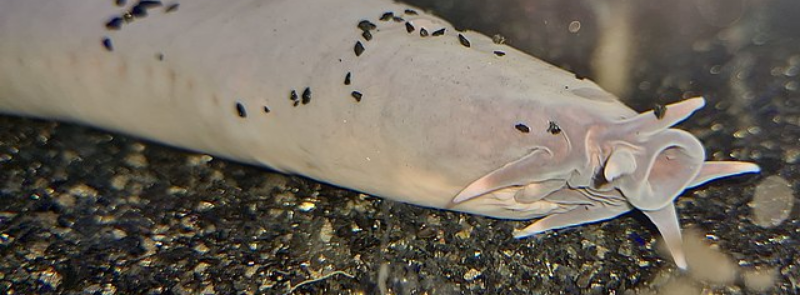
When It Occurs
Every Third Wednesday of October
Official Website
Timeline
Days Passed (439)
# Hashtags
#HagfishDay #MarineLife
Hagfish Day falls on the third Wednesday of October, spotlighting the unique but slimy hagfish.
Often deemed the least attractive species, this observance aims to urge everyone to move beyond the hagfish's appearance and recognize their remarkable evolutionary traits. Similar to judging a book by its cover, the day underscores the value of delving deeper into the subject matter.
History
- Origins: Hagfish Day was created by WhaleTimes, Inc., a non-profit organization focused on marine science education. The day was established to raise awareness about the ecological significance of hagfish and to challenge negative perceptions about this unique creature.
- Growth: Since its inception, Hagfish Day has grown in popularity, with educational institutions, marine organizations, and science enthusiasts participating in activities and events to celebrate the day.
Significance
Hagfish Day holds significant importance for several reasons:
- Biodiversity Appreciation: It highlights the importance of biodiversity and the role that even the most unusual creatures play in maintaining healthy ecosystems.
- Educational Opportunity: The day provides an opportunity to educate the public about hagfish and their ecological role, fostering a greater understanding of marine life.
- Conservation Awareness: By drawing attention to hagfish, the day promotes awareness of marine conservation issues and the need to protect ocean habitats.
Understanding Hagfish
-
Appearance:
- Hagfish are elongated, eel-like creatures with slimy, scaleless bodies. They can produce copious amounts of slime as a defense mechanism.
- They have a mouth surrounded by barbels and rows of tooth-like structures, which they use to feed on dead and dying marine animals.
-
Ecological Role:
- Decomposers: Hagfish are essential decomposers in marine ecosystems, breaking down dead and decaying matter and recycling nutrients back into the environment.
- Burrowers: They often burrow into the sea floor, helping to aerate the sediment and maintain a healthy marine environment.
-
Unique Adaptations:
- Slime Production: Hagfish can produce large quantities of slime to deter predators. This slime expands in water, creating a sticky barrier.
- Flexible Skeleton: Hagfish have a unique, flexible skeleton that allows them to tie themselves in knots, aiding in feeding and cleaning off slime.
Ways to Celebrate
-
Educational Activities:
- Classroom Lessons: Teachers can incorporate lessons about hagfish into their science curriculum, discussing their biology, behavior, and ecological importance.
- Science Projects: Encourage students to create projects or presentations about hagfish and their role in marine ecosystems.
-
Public Events:
- Aquarium Programs: Aquariums can host special programs, exhibits, or talks focused on hagfish and other unusual marine creatures.
- Workshops and Lectures: Organize workshops and lectures by marine biologists or scientists to educate the public about hagfish and marine conservation.
-
Creative Engagement:
- Art and Writing Contests: Hold art and writing contests for children and adults to depict hagfish or write about their significance.
- Social Media Campaigns: Use social media to share interesting facts, photos, and videos about hagfish, using hashtags like #HagfishDay and #CelebrateHagfish.
-
Marine Conservation Efforts:
- Beach Cleanups: Organize or participate in beach cleanups to help protect marine habitats.
- Fundraising: Raise funds for marine conservation organizations that work to protect ocean ecosystems and the creatures that inhabit them.
Fun Facts About Hagfish
- Ancient Lineage: Hagfish belong to an ancient lineage of jawless fish that have existed for over 300 million years.
- Unique Defense: The slime produced by hagfish is one of the most unique defense mechanisms in the animal kingdom. It can clog the gills of predators, making it difficult for them to attack.
- Multiple Hearts: Hagfish have multiple hearts. In addition to their main heart, they have accessory hearts that help pump blood throughout their body.
Conclusion
Hagfish Day is a unique celebration that encourages people to appreciate the diversity and complexity of marine life. By focusing on an often-overlooked creature, the day promotes a deeper understanding of the interconnectedness of all living organisms and the importance of conservation efforts. Whether through educational activities, public events, or creative engagement, Hagfish Day provides numerous ways to learn about and celebrate these fascinating creatures.


